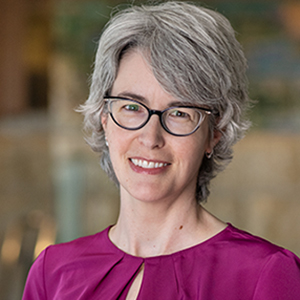Accurate demographic information is a powerful tool for determining the credit needs of emerging communities. It allows financial institutions to gauge the size of new markets and tailor their products accordingly. But when a community is based on faith, accurate market figures can be difficult to find.
The difficulty arises from the fact that the U.S. Census Bureau (Census Bureau), the nation's primary source of reliable demographic information, is prohibited from asking questions about religion on its census forms. Anyone seeking population figures for faith-based communities must rely on alternate sources of information. The situation presents a challenge for the organizations involved in efforts to develop Riba-free lending products in the Twin Cities, because estimates of the area's Muslim population range from approximately 20,000-130,000, depending on the source.
The Somali question
The Muslim community in the Twin Cities includes individuals with roots in Africa, South Asia, Eastern Europe and the Middle East, plus members of the Nation of Islam and other groups. The largest group of Twin Cities Muslims is made up of immigrants from the East African nation of Somalia. Because nearly all Somalis are Muslim, many estimates use the number of Somalis in the area as a basis for calculating the larger Muslim population.
Unfortunately, there is no authoritative estimate of the Somali population in the Twin Cities. The Census Bureau collects information on race and ancestry, but such data from the 2000 census are not yet available. And although the U.S. Immigration and Naturalization Service counts the immigrants from Somalia and other nations who enter the country in a given year and notes their initial destinations in the U.S., it does not track immigrants' resettlement to other cities or regions after their arrival. Minnesota is typically a second or third destination for Somali immigrants, so it is difficult to determine their numbers in the state through immigration records.
Existing estimates of the Somali population vary widely. For example, the State of Minnesota puts the number of Somalis at 14,000-15,000 statewide, with the majority located in Minneapolis. This figure, drawn from Minnesota Department of Children, Families and Learning data on children in public schools who speak Somali at home, differs from many Somalis' own estimates of their numbers at 80,000 or more in Minnesota.
Somalis only began arriving in Minnesota in significant numbers after 1990, when civil war forced them to flee their native country by the thousands. According to Barbara Ronningen, a research analyst at the Minnesota Planning Department's State Demographic Center, Somalis' recent arrival complicates attempts to determine their population in the Twin Cities.
"Usually, with ethnic groups, we can hope for baseline data and then use subsequent data to determine proportions and perform calculations to arrive at an estimate," says Ronningen. "But since Somalis didn't arrive until the 1990s, we don't have any baseline from the 1990 census."
Determining the non-Somali Muslim population in the Twin Cities is also a challenge. Relying on estimates from various faith-based and community organizations, social-service agencies and other sources, the Islamic Center of Minnesota puts the number of non-Somali Muslims in the state at 55,000. But this estimate is problematic because it is not based on scientific sampling or other standard survey methods.
U.S. estimates differ
Some research centers and other organizations use more scientific methods when studying the Muslim population in the U.S. The resulting findings are rarely broken down by city or metropolitan area, so the numbers offer little help in determining the Muslim population in the Twin Cities. But it is interesting to note that even these scientific approaches often arrive at vastly different estimates.
For example, four national Islamic organizations sponsored the Mosque Study Project 2000, which gathered data from telephone interviews conducted with a random sampling of mosque leaders across the country. The project counted 2 million adult American Muslims who are associated with mosques. Adding in children and other family members, plus Muslims who are not affiliated with mosques, the number supports an estimate of 6 million to 7 million Muslims nationwide. Another major study, conducted by The Graduate Center of the City University of New York, produced a much lower estimate. Basing its findings on a random-dial telephone survey of over 50,000 American households, the American Religious Identification Survey 2001 estimates the total U.S. Muslim population at just under 3 million.
A significant population
Considering the broad range of estimates at the local and national levels, it seems likely that the actual number of Muslims lies somewhere in the middle. With a range of 3 million to 7 million Muslims throughout the U.S., the best estimate might be around 5 million. In the Twin Cities, where the numbers range from approximately 20,000-130,000, a narrower range of 70,000-80,000 might be more realistic. But because of the inherent challenges to collecting demographic information about faith-based communities, the true number is not available.
Yet even the lowest estimates for the Twin Cities reveal a significant and—by all accounts—steadily increasing Muslim population. Although the individuals and organizations involved in alternative-lending initiatives cannot be certain of the area's exact Muslim population, they can be certain that any lending options they develop will be received by a sizable community.





